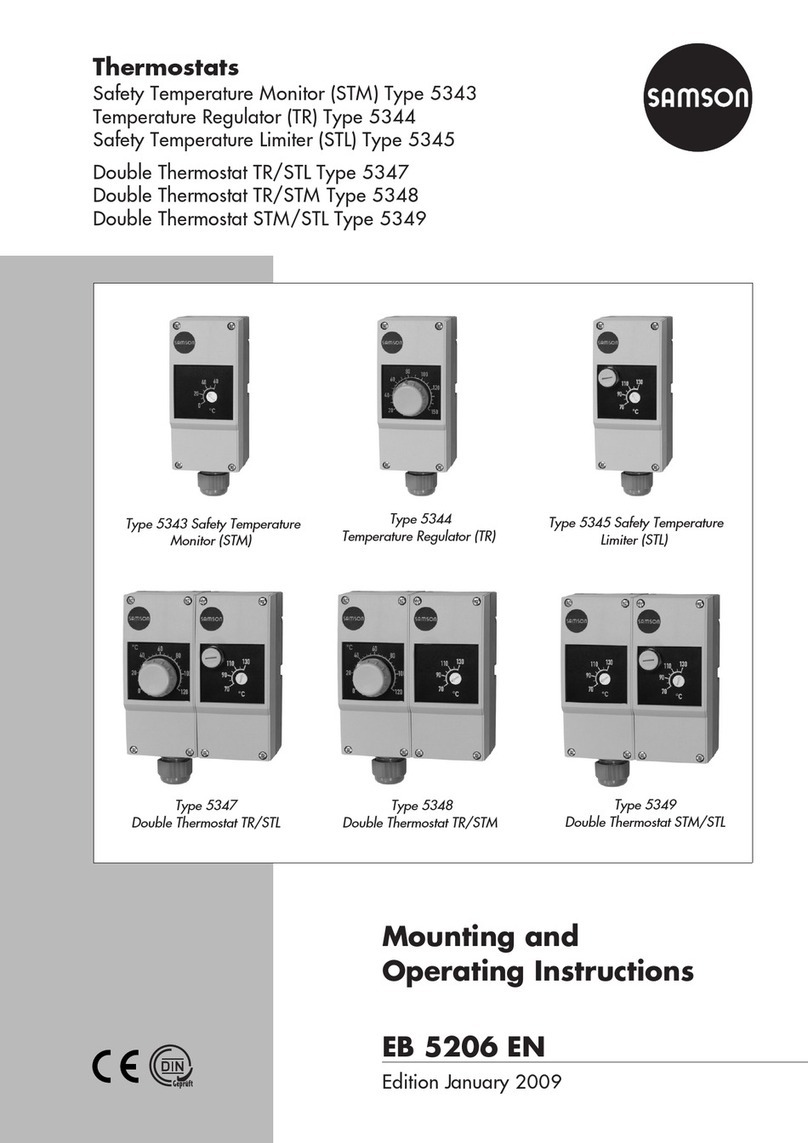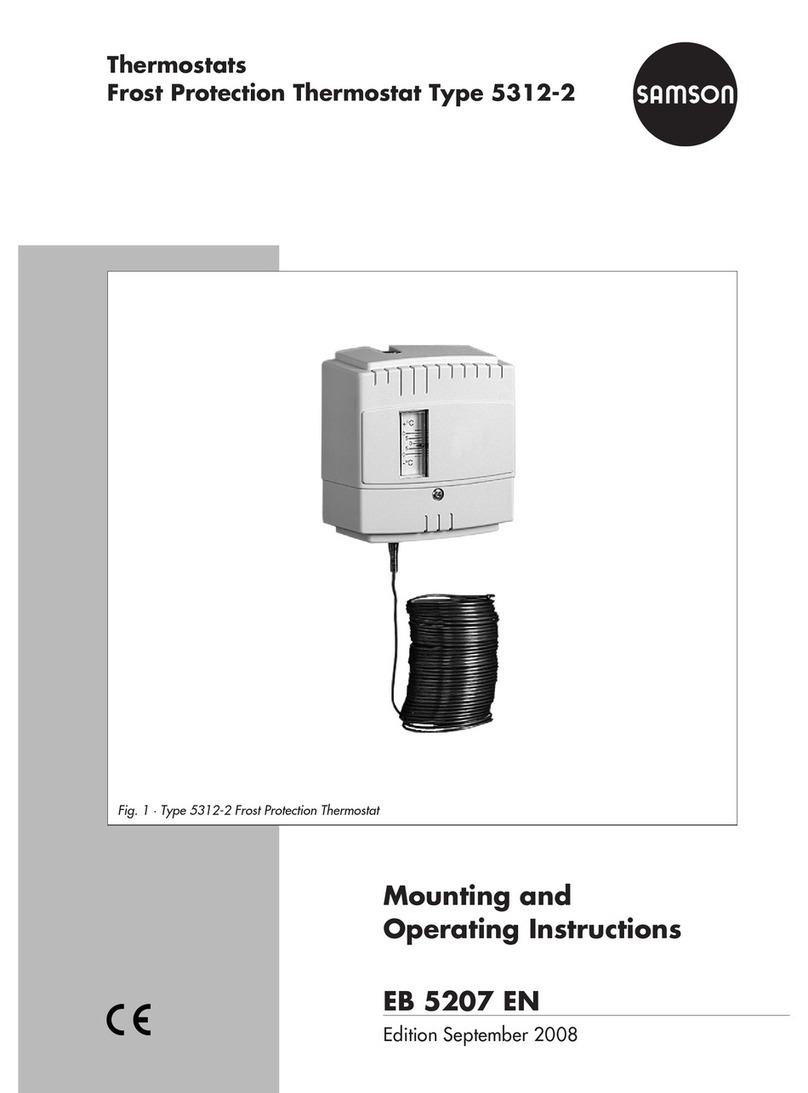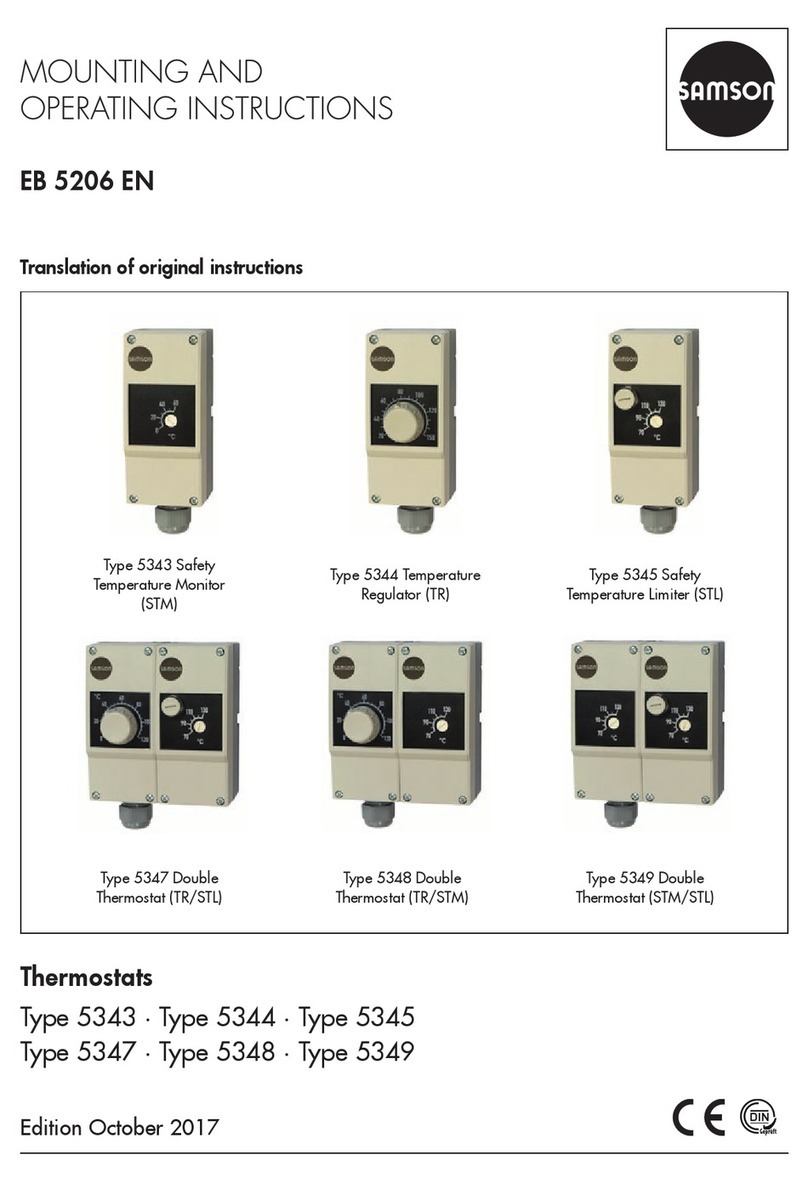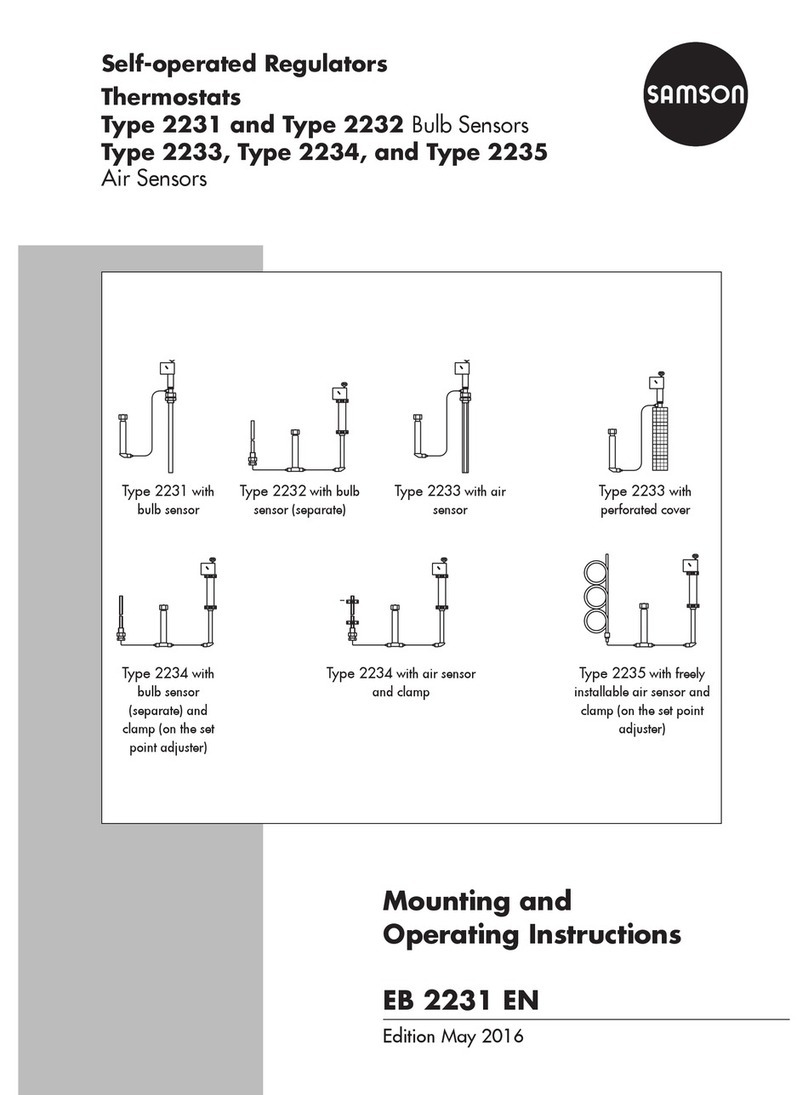
Contents
EB 2430 EN
1 Safety instructions and measures ................................................................1-1
1.1 Notes on possible severe personal injury ......................................................1-5
1.2 Notes on possible personal injury ................................................................1-5
1.3 Notes on possible property damage .............................................................1-7
2 Markings on the device ..............................................................................2-1
2.1 Nameplate of control thermostat ..................................................................2-1
2.2 Location of the nameplate ............................................................................2-1
2.3 Material identication number .....................................................................2-2
3 Design and principle of operation ...............................................................3-1
3.1 Additional ttings ........................................................................................3-2
3.2 Technical data ............................................................................................3-3
4 Shipment and on-site transport ...................................................................4-1
4.1 Accepting the delivered goods .....................................................................4-1
4.2 Removing the packaging from the control thermostat......................................4-1
4.3 Transporting and lifting the control thermostat ...............................................4-1
4.4 Storing the control thermostat .......................................................................4-2
5 Installation.................................................................................................5-1
5.1 Installation conditions ..................................................................................5-1
5.2 Preparation for installation ...........................................................................5-4
5.3 Mounting ...................................................................................................5-6
5.4 Testing the control thermostat .......................................................................5-7
5.4.1 Leak test .....................................................................................................5-7
5.4.2 Pressure test ................................................................................................5-8
5.5 Insulation ...................................................................................................5-8
6 Start-up .....................................................................................................6-1
6.1 Start-up and putting the device back into operation .......................................6-2
6.1.1 Starting up the plant when vapors and liquids are controlled ..........................6-2
6.1.2 Starting up the plant when vapors are controlled ...........................................6-2
7 Operation..................................................................................................7-1
7.1 Adjusting the temperature set point ...............................................................7-1
8 Malfunctions ..............................................................................................8-1
8.1 Troubleshooting ..........................................................................................8-1
8.2 Emergency action .......................................................................................8-2

































